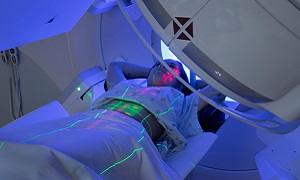Best Doctors in India for Squamous Cell Carcinoma Treatment
Best Hospitals in India for Squamous Cell Carcinoma Treatment
- City: Bengaluru, India
Hospital Highlights:
- Fortis Hospital Bannerghatta, Bengaluru was established in 2006.
- The hospital is a 276 bedded multi-specialty tertiary care facility.
- The hospital specializes in cutting-edge medical technology and dedicated patient care services.
- The hospital is equipped with state-of-the-art technologies like trans-radial angioplasty, trans-abdominal cardiac surgery, and computerized TKR navigation surgery.
- The hospital provides specialty medical services in cardiology, cardiac surgery, orthopedics, neurology, neuro-surgery, GI, and Minimal Access Surgery (MAS).
- City: Chennai, India
Hospital Highlights:
- Fortis Malar was established in 1992 and was formerly known as Malar Hospital.
- The hospital specializes in cutting-edge medical technology and dedicated patient care services.
- The hospital is multi-specialty, tertiary care facility with 180 beds.
- The hospital offers comprehensive medical care in specialties such as cardiology, cardio-thoracic surgery, neurology, neurosurgery, orthopedics, nephrology, gynecology, gastroenterology, urology, pediatrics, and diabetes.
- City: New Delhi, India
Hospital Highlights:
- Established in 1996, Pushpawati Singhania Research Institute is one of the top hospitals in the NCR region, as well as one of the top facilities in India for gastroenterology. The hospital is one of South Asia’s first institutes in medical and surgical treatment for diseases related to digestion.
- The hospital is equipped with state-of-the art facilities coupled with the latest equipment as well as renowned consultants from various parts of India as well as other parts of the world.
- City: New Delhi, India
Hospital Highlights:
- State-of-the-art technology and devoted healthcare professionals have been brought together under one roof at Venkateshwar Hospital to provide genuine medical care. The hospital’s professionals work together as a team to deliver the best possible treatment to their patients, using the most sophisticated equipment and information technology.
- Venkateshwar Hospital’s mission is to attain global excellence in healthcare by employing evidence-based, ethical clinical practices and cutting-edge technology by a team of highly skilled experts.
- City: New Delhi, India
Hospital Highlights:
- Sir Ganga Ram Hospital, New Delhi is known to provide the latest medical procedures with the latest technology in all of its units.
- The hospital has a team of reputed doctors, nurses, and healthcare professionals that ensure that patients receive quality care at affordable costs.
- Staffed with a team of highly qualified doctors, dedicated nurses, and paramedical and non-medical staff, the hospital aims to lead in healthcare delivery, medical education, training, and research.
- As per the vision of the founder, the hospital also provides free treatment to the economically weaker sections of society.
- Sir Ganga Ram Hospital also provides training to young doctors under the Diplomate in National Board(DNB) program. The DNB program at the hospital was started in 1984 and it is known for currently running the maximum number of DNB specialties in the country. It also has the distinction of having the first bone bank in India.
- City: Kerala, India
Hospital Highlights:
- Established in 2019, Apollo Adlux Hospital is the first Apollo Hospital in Kerala and the 73rd hospital owned by Apollo Group in India. With the state’s most advanced, comprehensive healthcare infrastructure and cutting-edge technologies, Apollo Adlux Hospital stands as an example of medical excellence in Kerala.
- With over 34 multi-specialty departments, the hospital believes in providing the best quality treatment to its patients at affordable rates, ensuring comfort at their difficult times.
- The 300-bed hospital is managed by a team of highly qualified and experienced experts who delivers exceptional hospitality to their patients and treats them with great compassion.
- With its affiliation with the Apollo Hospitals Group, the hospital aims in providing patients with top-notch healthcare services while also serving communities in Kerala.
- The hospital has good railway and road connections, and is conveniently close to Cochin International Airport.
- City: Gurugram, India
Hospital Highlights:
- Situated near DLF Cyber City, Gurugram, Narayana Superspecialty Hospital is one of the top medical facilities in the Delhi NCR region, catering to the needs of the people. Known for its commitment to quality medical care and patient service, the hospital is a state-of-the-art facility with planned and well-equipped sections, which includes a spacious OPD area as well as comfortable patient rooms.
- It is the closest super-specialty hospital from Indira Gandhi International Airport towards Gurugram, and also the nearest super specialty hospital from DLF Cyber City. It is also close to major residential areas in Gurugram.
- It is part of the renowned Narayana Health Group. Established in 2000, by Dr. Devi Shetty, a renowned cardiac surgeon, it has grown to be one fo India’s leading healthcare groups.
- City: Noida, India
Hospital Highlights:
- Fortis Hospital, Noida, stands as one of the oldest and most trusted healthcare institutions in the region, setting a benchmark for comprehensive medical care.
- As the second mega hub hospital in the Fortis Healthcare Group, Fortis Hospital, Noida, upholds a legacy of trust among more than 1.2 million patients. By integrating top-tier professionals with cutting-edge technology, the hospital delivers superior treatment across various medical disciplines.
- Specializing in advanced Neurosciences, Orthopedics, Kidney and Liver Transplant Programmes, Fortis Hospital, Noida has successfully performed over 1,500 transplants, solidifying its reputation as a leader in specialized medical interventions.
Squamous Cell Carcinoma
Squamous Cell Carcinoma is a common form of skin cancer, which is found in areas of the body that have been damaged by the sun’s UV rays or tanning beds. The exposed skin can include skin in the head, neck, chest, upper back, lips, ears, legs and hands.
Unlike other types of skin cancer, Squamous Cell Carcinoma (SCC) is a slow-growing skin cancer. It can however spread to tissues, bones as well as the lymph node, where it can become quite difficult to treat. Although usually not life-threatening, it can be quite aggressive. It can however be easy to treat if it is caught early. If it is left untreated, Squamous Cell Carcinoma of the skin might grow large and spread to various parts of the body, which can lead to various complications.
Symptoms
Squamous cell carcinoma of the skin usually occurs on sun-exposed skin, such as the scalp, the backs of your hands, your lips or your ears. However, it might also occur anywhere on the body, including inside your mouth or the bottoms of your feet. It may even occur in your genitals.
It can have several signs and symptoms which include:
- A firm and red nodule
- A new sore or raised area on an old scar or an ulcer
- A flat sore with a scaly crust
- A red and raised patch or wart-like sort on or in the anus located on your genitals.
Causes and risk factors
Mutations that occur in skin cell DNA leads to skin cancer. These changes can cause abnormal cells to multiply out of control. When this occurs in the squamous cells, the condition is termed as SCC.
UV radiation is the most common known cause of DNA mutations, leading to skin cancer. UV radiation can come from sunlight or tanning lamps and beds.
Though frequent expose to UV radiation increases the risk of skin cancer, the condition can also develop in people who are not spending much time in the sun or tanning beds. Such people might be genetically predisposed to skin cancer or they might be having a weaker immunity, which increases their likelihood of getting skin cancer. Patients who are receiving radiation treatments for other skin conditions can also be at risk of skin cancer.
Having fair skin, light-colored hair and blue, green or gray eyes is a risk factor for SCC. Having long-term exposure to UV rays is the most common risk factor. Few other risk factors include living in sunny regions or at a high altitude, having a history of being exposed to chemicals, having a history of multiple severe sunburns.
Diagnosis
Tests and procedures which are used for diagnosis of squamous cell carcinoma of the skin can include:
Physical exam
Removing a sample of tissue for testing
For confirming squamous cell carcinoma of the skin diagnosis, your doctor will be using a tool to cut away some or the entire suspicious skin lesion also called a biopsy. The type of skin biopsy which you undergo depends on your particular situation. The tissue is sent to a laboratory for examination.
Treatment
Treatment is based on multiple factors, such as the extent as well as the severity of your cancer, your age, your overall health, the location of cancer.
There are many treatments that can be performed as in-office procedures. These include:
Mohs’ micrographic surgery
In Mohs’ micrographic surgery, your doctor removes the abnormal skin using a scalpel, along with some of the surrounding tissue. This sample is then immediately examined using a microscope. If cancer cells are found in the sample, this process is repeated until no cancer cells are found.
Electrosurgery
Electrosurgery, which is also known as curettage and electrodesiccation, involves scraping off cancer as well as burning the skin for killing cancer cells. Typically this process is done more than once for ensuring thorough treatment as well as complete removal of cancer.
Excisional surgery
Excisional surgery, during which your doctor removes your cancer cells as well as a thin layer of healthy skin, in the surrounding area. Stitches are used for closing the wound. After this, the sample is sent to a laboratory to ensure the entire cancerous area has been removed.
Radiation
Some doctors might also use photodynamic therapy, or laser surgery and topical medications for treating SCC. However, the US Food and Drug Administration have not approved such methods for treating it.
Once SCC has been treated, it is important that you attend the follow-up visits with your doctor. SCC can return and therefore, it is important that you monitor your skin for any precancerous or cancerous areas at least once a month.
Prevention
To reduce the risk for SCC, one can follow these tips:
- Limiting exposure to the sun, especially during 10 am and 4 pm
- Wear sunscreen while going out in the sun
- Wear sunglasses that provide UV ray protection
- Wearing a hat and covering the skin while working outside
- Check the skin every month for any abnormal growths
- Protecting the skin during winter as winter rays can be especially dangerous
- Avoid tanning beds and lamps
- Consult a dermatologist once a year, for a full-body skin check











